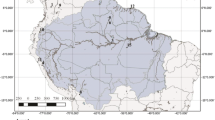Abstract
Fieldwork is one of the primary methods for studying medicinal plants and materials, and information thus obtained can be valuable for experiments performed in the laboratory. Meanwhile, results of experiments in the laboratory can be brought back to the field for verification and further investigation. A combination of field and laboratory work has led to effective progress in studies of medicinal plants in the field of pharmacognosy. However, the collection of samples with information through fieldwork is not easy, and it fundamentally requires a great deal of research experience. Geographical, ethnical, and political affairs often affect its performance, and to establish a good cooperative relationship with foreign localities is inevitably required. Beyond these difficulties, fieldwork can provide a framework for the research project and excellent and unique viewpoints concerning the target. This review article describes studies on perilla, agarwood, and cinnamon, focusing mainly on the results of fieldwork performed in Indochina on these species. All three of these medicinal plants contain essential oils, and their composition varieties, biosynthetic pathways, pharmacological activities, or induction mechanisms for production are principally investigated through shuttling between fieldwork and laboratory experiments.

Similar content being viewed by others
References
Ito M, Yamane Y, Chinh ND, Qui TK, Honda G (2006) Folk medicines in Dan Phuong village in southern Vietnam. Nat Med 50:420–425
Honda G (1994) Genetics of oil composition of perilla. Farumacia 30:486–490
Ito M, Honda G, Sydara K (2008) Perilla frutescens var. frutescens in northern Laos. J Nat Med 62:251–258
Ito M, Toyoda M, Kamakura S, Honda G (2002) A new type of essential oil from Perilla frutescens from Thailand. J Essent Oil Res 14:416–419
Ito M (1999) Phylogenetic and chemotaxonomic studies on Japanese perilla. Ph.D. thesis, Kyoto University
Honda G (1996) Genetic control of the essential oil components in Perilla. FFI J 169:9–15
Rajaonarivony JIM, Gershenzon J, Croteau R (1992) Characterization and mechanism of (4S)-limonene synthase, a monoterpene cyclase from the glandular trichomes of peppermint (Mentha × piperita). Arch Biochem Biophys 296:49–57
Yuba A, Yazaki K, Tabata M, Honda G, Croteau R (1996) cDNA cloning, characterization, and functional expression of 4S-(−)-limonene synthase from Perilla frutescens. Arch Biochem Biophys 332:280–287
Ito M, Honda G (2007) Geraniol synthases from perilla and their taxonomical significance. Phytochemistry 68:446–453
Ito M, Honda G (1996) A taxonomic study of Japanese wild Perilla (Labiatae). J Phytogeogr Taxon 44:43–52
Honda G, Yuba A, Kojima T, Tabata M (1994) Chemotaxonomic and cytogenetic studies on Perilla frutescens var. citriodora (“Lemon Egoma”). Nat Med 48:185–190
Ito M, Kato H, Oka Y, Honda G (1998) Phylogenetic analysis of Japanese Perilla species by using DNA polymorphisms. Nat Med 52:248–252
Ito M (2008) Studies on perilla relating to its essential oil and taxonomy. In: Matsumoto T (ed) Phytochemistry research progress. Nova Science Publishers, New York, pp 13–30
Matsutani A (1995) Perilla seeds unearthed from the excavations. Koukogaku J 389:9–13 (J Archaeol)
Yagura T, Shibayama M, Ito M, Kiuchi F, Honda G (2005) Three novel diepoxy tetrahydrochromones from agarwood artificially produced by intentional wounding. Tetrahedron Lett 46:4395–4398
Ito M, Okimoto K, Yagura T, Honda G, Kiuchi F, Shimada Y (2005) Induction of sesquiterpenoid production by methyl jasmonate in Aquilaria sinensis cell suspension culture. J Essent Oil Res 17:175–180
Takemoto H, Ito M, Shiraki T, Yagura T, Honda G (2008) Sedative effect of vapor inhalation of agarwood oil and spikenard extract and identification of their active components. J Nat Med 62:41–46
Ito M, Honda G (2005) Taxonomical identification of agarwood-producing species. Nat Med 59:104–112
Ito M, Shimada Y, Kiuchi F, Qui TK, Honda G (2004) Field survey of cinnamon in Viet Nam. Nat Med 58:168–176
Acknowledgments
I would like to express my sincere thanks to the local people and researchers in Vietnam, Thailand, Taiwan, and Laos who cooperated with us to achieve the field studies. My appreciation is also expressed to the Japanese researchers and students who worked with on these projects. My special thanks also go to Professor Gisho Honda of Himeji Dokkyo University (emeritus Professor of Kyoto University).
Author information
Authors and Affiliations
Corresponding author
Rights and permissions
About this article
Cite this article
Ito, M. Studies on perilla, agarwood, and cinnamon through a combination of fieldwork and laboratory work. J Nat Med 62, 387–395 (2008). https://doi.org/10.1007/s11418-008-0262-z
Received:
Accepted:
Published:
Issue Date:
DOI: https://doi.org/10.1007/s11418-008-0262-z




